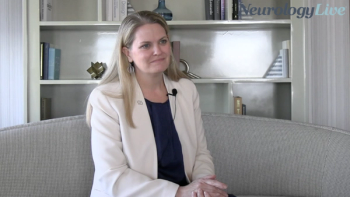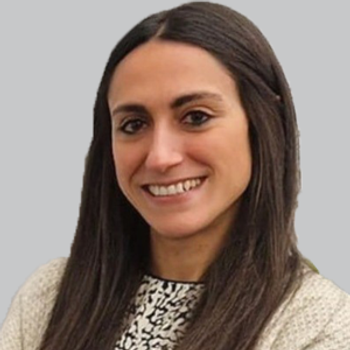
NMOSD Early Age of Onset Predicts Severe Residual Vision Loss

Patients with an early age of onset (AO) were also more likely to receive less effective first-line oral therapy than those with later AOs.
Data from a recent study suggests that early age of onset (AO) of
Patients with an AO of under 21 years of age were more likely to have SRVL, as well as blindness, binocular optic neuritis (ON), and recurrent optic neuritis when compared to patients with AO ≥21 years. These patients were also more likely to receive less effective first-line oral therapy. The odds of SRVL were 4.68 times greater in patients with an AO <21 years (95% CI, 1.53–14.34; P = .007) after adjusting for race, sex and disease disruption.
First author Gabrielle Macaron, MD, neurologist, Cleveland Clinic, and colleagues wrote that “our results indicate that early AO, <21 years old, predicts SRVL in patients with NMOSD, independently from disease duration. Moreover, younger patients experienced more frequent ON relapses in their disease course as well as binocular involvement, and were less likely to be treated with high-efficacy medications as a first-line treatment compared to older patients.”
Macaron and colleagues analyzed data from 106 patients with NMOSD, 87 (82.1%) of which were women with an average AO of 35.8 years (standard deviation [SD], 16.5). Azathioprine first line was received in 57 (53.8%) patients, rituximab in 25 (23.6%), mycophenolate mofetil in 13 (12.3%), methotrexate in 4 (3.8%) and inebilizumab as part of a clinical trial in 2 (1.8%).
READ MORE:
The authors found that patients in the SRVL group had an earlier mean AO of 26.7 years compared to 38.0 years in the non-SVRL group (P =.005). The SVRL group also had a larger proportion of patients with an AO <21 years.
Patients with an AO <21 years were more likely to have a visual acuity (VA) worse than 20/200 in both eyes and to be legally blind when compared with patients with an AO ≥21 years (P = .004). They were also more likely to have binocular ON (P = .009) or acute demyelinating encephalomyelitis (ADEM)-like presentation at onset (P = .016), to experience ⩾2 ON in the disease course (P = .014), and to be started on an oral immunosuppressant first line (P = .042).
In patients with an AO ⩾21 years, the time from disease onset to initiation of an NMOSD therapy was a median of 55.0 months (interquartile range [IQR], 12.0–249.0) in patients with SRVL (n = 11) compared to a median of 10.5 months (IQR, 4.0–48.0; P = .042) in the non-SRVL group (n = 70). In patients with an AO <21 years, there was no significant difference in the time from disease onset to initiation of an NMOSD therapy between patients with (n = 9) and without (n = 12) SRVL (P = 0.41).
Macaron and colleagues also investigated patients with aquaporin4-IgG (AQP4-IgG) and did not find any significant differences in most outcome measures, however AO was lower in the AQP4-IgG- group (mean, 29.5 years; SD, 13.5) than in the AQP4-IgG+ group (mean, 38.1 years; SD, 16.5; P = .023).
“We suggest that early high-efficacy therapies should be considered as a first-line treatment in younger patients with NMOSD to prevent irreversible visual disability. However, further work is needed to understand the physiopathology of optic nerve inflammation and repair in children and clarify the efficacy and safety of this approach in NMOSD,” Macaron and colleagues concluded.
REFERENCE
Macaron G, Khoury J, Bena J, et al. Early age of onset predicts severity of visual impairment in patients with neuromyelitis optica spectrum disorder. Mult Scler J. Published online January 6, 2021. doi: 10.1177/1352458520981736
Newsletter
Keep your finger on the pulse of neurology—subscribe to NeurologyLive for expert interviews, new data, and breakthrough treatment updates.


































